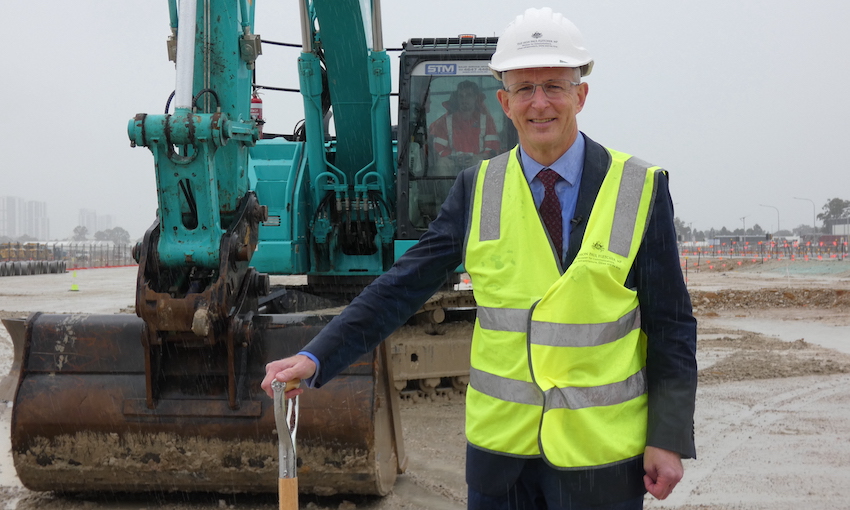CONSTRUCTION of the Moorebank Interstate Intermodal Terminal has officially commenced, marked by a ground-breaking ceremony at Moorebank Logistics Park in south-western Sydney.
Expected to become the largest intermodal precinct in the world, the new terminal will be built under an industry-first joint development model between the National Intermodal Corporation, Qube, and logistics property specialist LOGOS.
The interstate terminal will be the first of four interconnected precincts to be developed along Australia’s east coast, including two in Melbourne and one in Brisbane.
At a presentation prior to Wednesday’s ceremony, National Intermodal Corporation CEO James Baulderstone said the terminal’s capacity to connect sea, road, and rail freight would enhance Australia’s supply chain.
“The reason [this project] is so important for the supply chain is it brings the great modes of transport all together into an integrated concept,” Mr Baulderstone said.
“Unless we have a good supply chain, we can’t support our standard of living as a society.”
Mr Baulderstone said the new facility will improve the way freight moves between state capitals and within Sydney. He described the development as the transformation of the nation’s supply chain.
“Our success will be measured by ensuring that increased volumes of products arrive where and when they are needed with improved efficiency and safety,” he said.
“It shows real collaboration between the government and industry as a great model for what we can do in the future.”
The federal government has invested $514 million so far for the delivery of the Moorebank Intermodal Terminal Precinct
Minister for communications, urban infrastructure, cities and the arts Paul Fletcher said the delivery of the freight terminal would take thousands of trucks off local roads each day.
“Connecting the Moorebank precinct in Sydney to key rail freight routes along the east coast … will support a major increase in freight volumes handled at the precinct, driving modal shift from long distance road to rail-based freight transportation,” he said.
Mr Fletcher also highlighted the project’s positive environmental impacts, noting that rail transport is three times more carbon efficient than road per tonne of freight.
“Once fully operational, the precinct will take up to 3000 truck movements off Sydney roads each day and reduce up to 110,000 tonnes of carbon dioxide emissions per year.”
Minister for finance Simon Birmingham highlighted the role of the Inland Rail in enhancing connectivity between the future terminals.
“These important terminals will provide additional resilience and strengthen our nations supply chains to ensure supermarket shelves remain stocked and our exporters can get their product overseas as quickly as possible,” Mr Birmingham said.
“As we continue to implement our long-term economic plan, it is critical that we have the necessary rail and terminal infrastructure in place to support the movement of goods around Australia and overseas in the most efficient and cost-effective ways.
“It’s why our government continues to back and invest in the construction of the Inland Rail Project and delivery of intermodal terminals which will create a world-class freight network up and down Australia’s east coast.”
The interstate terminal at Moorebank is expected to reach completion in March 2025.





